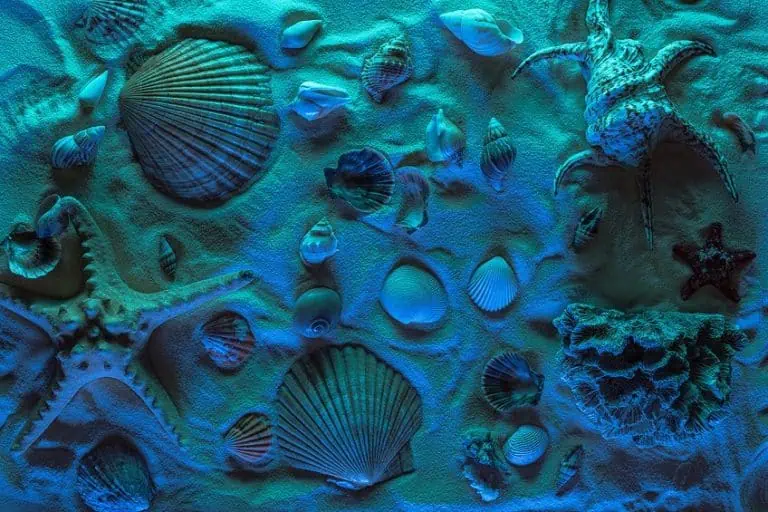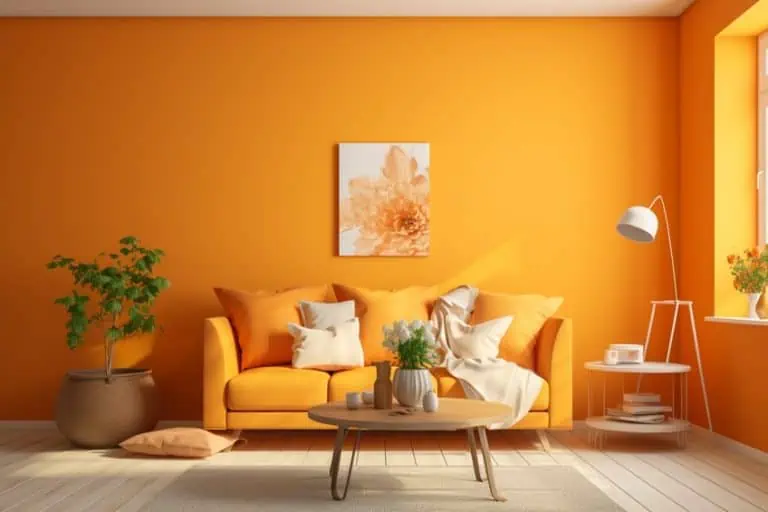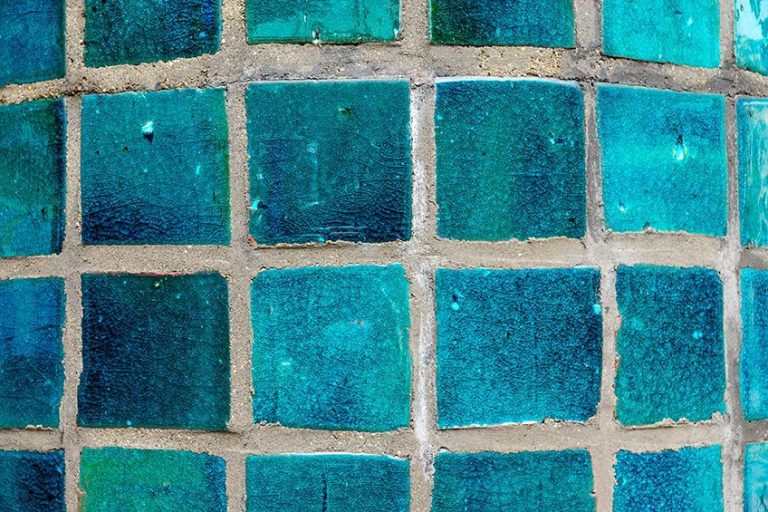What Colors Make Magenta? – How to Make Magenta Paint Yourself!
This post may contain affiliate links. We may earn a small commission from purchases made through them, at no additional cost to you.
What color is magenta? There are a few variations to its description, but it has been defined as a reddish-purple or purplish-red. Magenta has also been described as part of the pink and violet family. In this article, we will try to clarify what two colors make magenta if there are any, and how to make magenta using acrylic paints.
Table of Contents
Interesting Facts About Magenta
Let us start with how the name magenta came to be. First, there was the invention of the synthetic aniline dye, by William Perkin in 1856, which was named mauveine. This discovery then inspired many other chemists to experiment to create more colors. The name magenta was also taken from what was known as an aniline dye, which was discovered and patented by Francois-Emmanuel Verguin, who was a French chemist during the mid-19th century. The patent was then sold to the Renard brothers, who then manufactured the dye commercially. Before it became well-known as magenta, the dye formula itself was called fuchsine, which is also known as rosaniline hydrochloride.
The actual name magenta was taken from the Battle of Magenta, which was in honor of the Italian-French victory. This battle was fought between the French and Austrians in 1859 close to the Italian town, also known as Magenta, which is in Lombardy and forms a part of Northern Italy. Soon after the French chemist Verguin, came two British chemists, George Maule, and Chambers Nicolson, who also created an almost identical color known as roseine. Many artists began using the color on the canvas after its discovery. For example, Portrait of Marie Lagadu (1890) by the artist Gauguin.
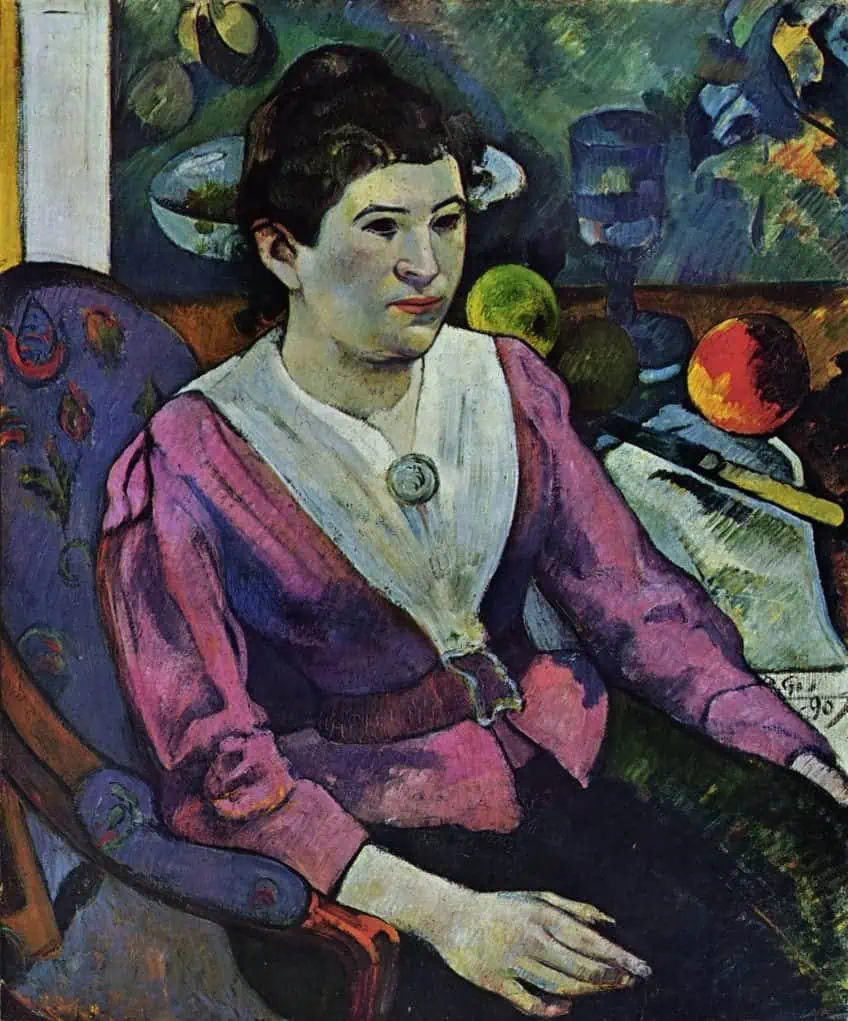 Portrait of Marie Lagadu (1890) by Paul Gauguin; Paul Gauguin, Public domain, via Wikimedia Commons
Portrait of Marie Lagadu (1890) by Paul Gauguin; Paul Gauguin, Public domain, via Wikimedia Commons
Many of these synthetic dyes and pigments tended to fade quite fast, which was fine for commercial art. However, these types of pigments were not ideal for fine art. So, in the early 20th century, quinacridone, an organic compound was found to be more suitable as a pigment because of its lightfast properties. This compound is often used as magenta and various shades of this color can be produced by simply adding various amounts of white paint.
Does the color magenta exist in nature? This is a somewhat curious matter as the answer is a simple no. So, where does magenta fit in? The color magenta has no wavelength of light that is in the visible spectrum. The color is produced or perceived by our brain, which interprets the blending of blue and red colors of light. Many flowers are the color of magenta, especially those that are indigenous to the tropics as well as sub-tropics. These magenta flowers, along with green stems and leaves, create a high contrast, which helps make the plants more enticing to insects and animals for pollination.
In our society, magenta is a color that is mostly associated with happiness, appreciation, and emotional harmony.
What Two Colors Make Magenta?
This is not as simple to explain as it sounds, as magenta can be considered a primary and secondary color in various color models. Let us explain. When talking about pigments or dyes, red, blue as well as yellow are considered primary colors. This is known as the RYB model, which is used to mix paints. Combining these colors will then form your secondary colors and then your tertiary or intermediate colors. All these colors can be seen on the color wheel. However, many use the modern color model that uses magenta in place of red, cyan in place of blue, and yellow, which are the primary colors. When mixing red and blue paint, depending on the type of red or blue, it should give you a violet or purple color. The following are other important color models many use every day.

Subtractive Color Model
This is when colors are produced from reflected light, this includes mixing paint and pigments, for example, in printing. This color model also makes use of magenta, cyan, as well as yellow. Pigments or chemical dyes create color by absorbing or subtracting some wavelengths and reflecting others when light is shined on them. For example, cyan will absorb red, which then leaves green and blue, to make cyan. Magenta will absorb green, which leaves yellow and red, which is what produces magenta. The cyan, magenta, yellow, as well as black (CMYK) model type is used in printing, where these colors are used to create all other colors including black.
For example, cyan and magenta create blue, yellow, and magenta make red, and all three colors create black.
Additive Color Model
This color model contains the colors red, green, and blue (RGB), and is used by certain light sources like your computer screen or television. Color is created by adding light, which is why it is called an additive color model. So, if you combine all the colors, you should end up with white. In this case, when combining red and blue, you get cyan or green and red creates yellow. What two colors make magenta? In this case, red and blue will create magenta, which makes it a secondary color in this model. So, when referring to the color magenta, it is mostly to do with your CMYK and RGB color model systems.

There are some slight variations between the magenta colors used on the web and for printing. The color used in printing is also known as Process magenta, pigment, or printer’s magenta. This magenta is less vibrant than the magenta you see on your computer screen. The magenta color on the screen cannot be reproduced exactly on paper. On paper, it is called fuchsia and does not appear as vivid as on the screen but has the same hex code. Hex codes are what you can use to identify colors online, and each color shows how much color is needed for web projects or printing. Below is a table presenting these codes. As with many colors, there are many shades of magenta
| Magenta Shade | Magenta Hex Code | CMYK Magenta Color Code | RGB Magenta Color Code | Magenta Color |
| Magenta | #ff00ff | 0, 100, 0, 0 | 255, 0, 255 |
How Do You Make Magenta Paint?
Let us look at what colors make magenta when it comes to painting. There are some different options when looking at how to make magenta paint. When mixing paint colors, you might not get an exact magenta color, but you can get something close to it. What color is magenta? Well, some people see it as a pinkish-purple.
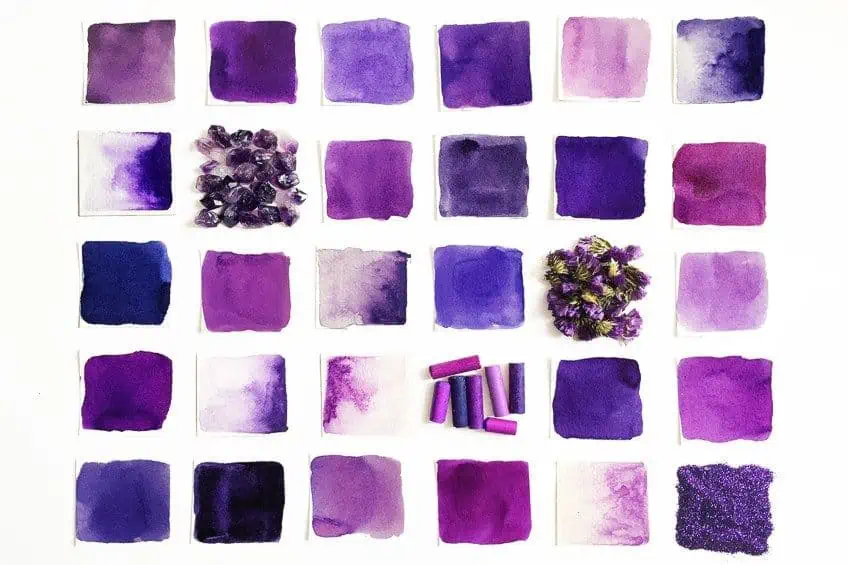
So, you can use blue and red, but you will need to add in a little white to get closer to the color magenta. Varying amounts of paint colors will also have an effect, adding more blue might appear to be more of a deep violet. Including more red, on the other hand, can create more of a maroon color. The recommended two colors are cadmium red and cobalt blue. If you use a darker red, you might have to add white to get a more pink color. You can also include yellow to soften the color more, and then add blue or violet to get as close to magenta as possible.
| Shade | Hex Code | CMYK Color Code | RGB Color Code | Color |
| Deep Violet | #330066 | 50, 100, 0, 60 | 51, 0, 102 | |
| Maroon | #800000 | 0, 100, 100, 50 | 128, 0, 0 |
To get a more accurate magenta color, it is best to get magenta pigment paint than mix two colors. This paint can usually be purchased at your local art or craft store and is labeled as Quinacridone Magenta.
| Shade | Hex Code | CMYK Color Code | RGB Color Code | Color |
| Quinacridone Magenta | #9a114f | 0, 89, 49, 40 | 154, 17, 79 |
How to Make Magenta Paint Darker
There is more than one way to darken magenta, adding black being the most obvious. However, dark green might be a better choice for more vivid color. This is because green is located on the opposite end of the color wheel and is the complementary color of magenta. When mixing paint, it is always best to use small amounts of paint as it is easier to add paint than to take it out.
You can also lighten and brighten magenta by adding white or yellow paint.
How to Make Paint Mediums With Magenta Pigment
How do you make magenta paint from scratch? You can easily purchase magenta powder pigment and use this to create paint. You can do this with all paint mediums including oil paints, acrylics, and watercolor paints.
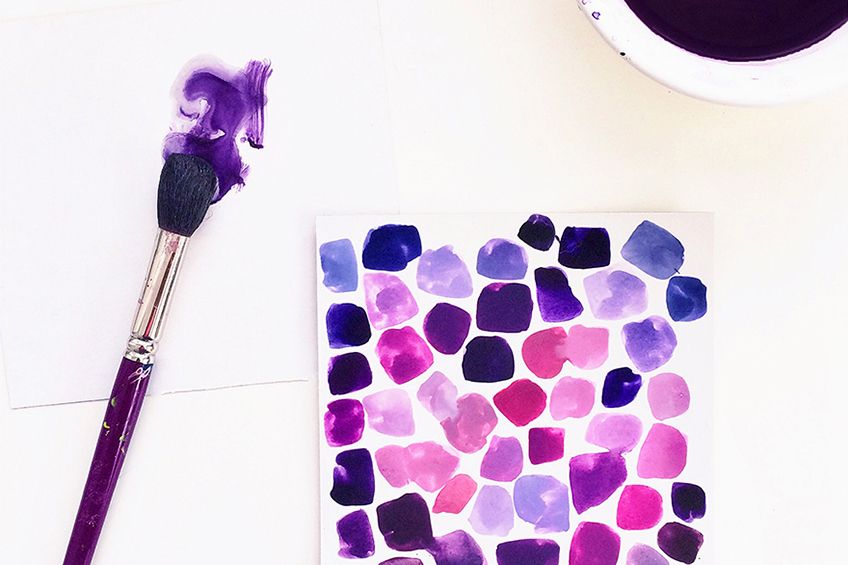
Oil Paints
The process of making oil paints is quite easy, simply add some of the magenta pigment to an oil medium like linseed oil. You can use this to paint with all your other oil paints. There are, of course, other mediums you can use, each having its own properties. However, linseed is best for beginners and is easy to use. If you are only going to need a small amount of magenta, then it may be a better idea to simply purchase an existing tube of paint.
Using a pigment powder for larger amounts might work out cheaper, but it all depends on what you want to be done.
Making your own acrylic paints is also a fairly simple process and can be done by beginners. Again, take some of the magenta pigment powder and add it to a clear gesso acrylic. Mix all ingredients well until it reaches the desired color. You can also use white gesso, however, the clear gesso will provide more vibrant color, while the white base will make it more opaque. Also, the white gesso might use more of the pigment powder to get the color you are looking for, and this will also take more time to do.
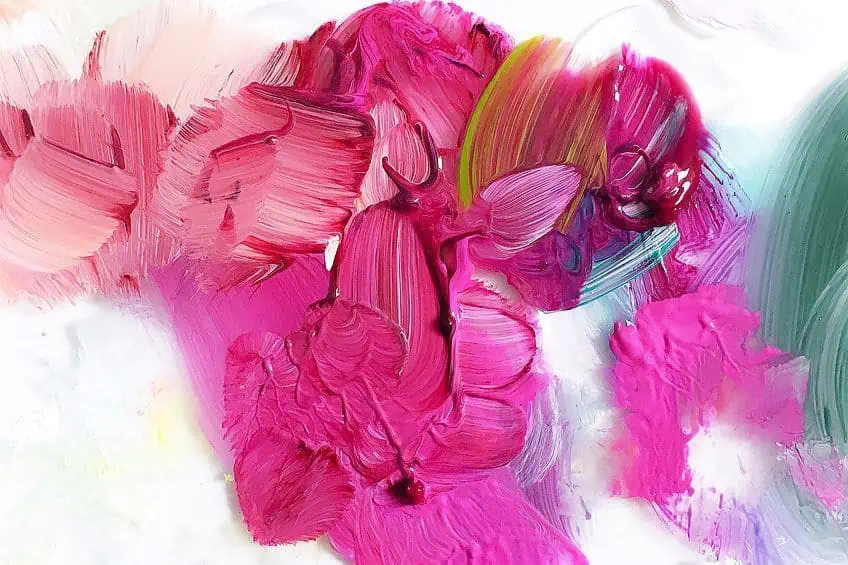
Creating a paint color with pigment powder is simple, but does take time, which is why many artists prefer to simply purchase a ready-made magenta color paint. Also, some may opt for using an alternative color that is close to magenta, instead of going through the whole process or wasting money on a color they might not use often.
Even though beginners can mix their own paint colors, it is a good idea to first have some experience with mixing colors and painting in various mediums. When making magenta watercolor paint, you again take the paint powder and mix it with some gum Arabic. However, when mixing this paint, it will have to be used on the day or the next day as it becomes difficult to use if kept longer. If you do, you can try to add water to rehydrate, but it can lighten the color too much, and you are left with a color you do not want. An ideal option would be to simply use a ready-made tube of magenta watercolor paint.
This is most probably cheaper and easier to do and is what most recommend.
What Colors Can You Substitute for Magenta?
The two colors that many recommend are violet and rose. These colors can also come in various types, so it depends on the hue and shade. Two of the colors you may want to try are opera rose and permanent rose. Opera rose is a lighter color, while the permanent rose is a darker color. The best violet color would be the quinacridone violet, which is quite a dark color that you can use to get close to magenta.

We hope we have cleared up some of the questions like what colors make magenta. As you can see, sometimes things are not simply black and white, and you need to consider every aspect and gain an understanding of color theory.
Take a look at our how to make magenta webstory here!
Frequently Asked Questions
What Colors Make Magenta?
This depends on what color model you are looking at as magenta can be considered a primary color as well as a secondary color. In your red, green, and blue or RGB model, red and blue make magenta.
What Color Is Magenta?
The exact description of magenta can vary according to each individual as we all see colors slightly differently. Some may say it is a pinkish-purple, or a reddish-purple, while others may say it is a purplish-red.
What Colors Work Well With Magenta?
Magenta is associated with harmony as well as creating a feeling of balance. To make the color stand out, pair it with green as this is its complementary color. Magenta can also work well with other shades of pink as well as with bright blues and even shades of yellow.
Is Magenta a Color?
In nature, magenta does not exactly exist as it does not have a wavelength in the visible spectrum of light. We see magenta because our brain creates the color from blue and red.
Duncan graduated with a diploma in Film and TV production from CityVarsity in 2018, after which he continued pursuing film while taking on a keen interest in writing along the way. Since having graduated, he began working as a freelance videographer, filming a variety of music videos, fashion and short films, adverts, weddings and more. Throughout this, he’s won a number of awards from various film festivals that are both locally and internationally recognized. However, Duncan still enjoys writing articles in between his filming ventures, appreciating the peace and clarity that comes with it.
His articles focus primarily around helping up-and-coming artists explore the basics of certain colors, how these colors can be paired with other shades, as well as what colors are created when you mix one with another. All while relating these shades to historically significant paintings that have incorporated them into their color palette. As a lover of the arts himself, he takes great interest in the Renaissance era of paintings, an era that has directly inspired many of his favorite films.
Learn more about Duncan van der Merwe and about us.



